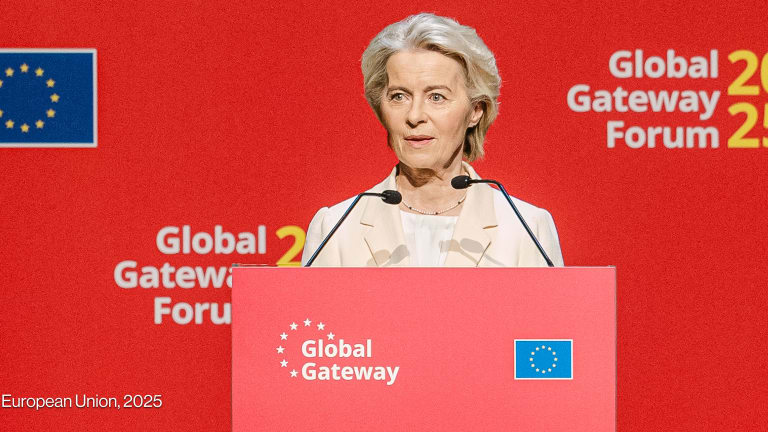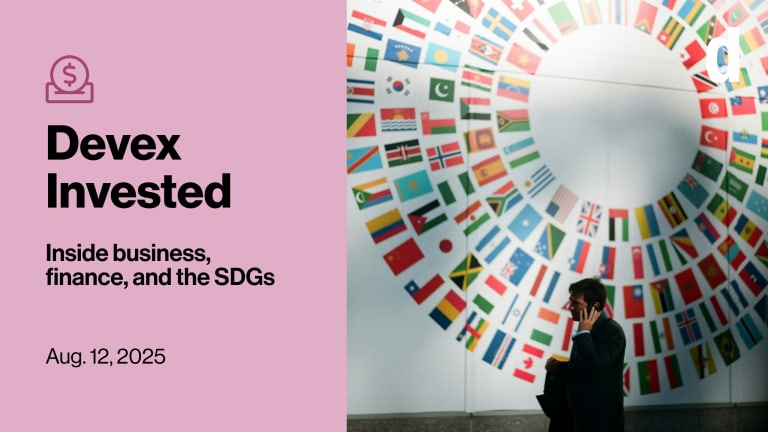European Commission in 'tough' talks with DFIs over new guarantee
The European Commission has finalized just one of the 28 guarantees it is offering to development finance institutions under its External Investment Plan, as the program lags behind its early ambitions.
BRUSSELS — The European Commission has finalized just one of the 28 guarantees it is offering to development finance institutions under its External Investment Plan, though it hopes to ink more after a meeting next week. The commission has allocated €1.54 billion ($1.74 billion) to encourage institutions such as the European Investment Bank, European Bank for Reconstruction and Development, and national development banks, to take on risky investments with high development impact in countries neighboring the European Union and in sub-Saharan Africa. Under one element of the External Investment Plan, known as the European Fund for Sustainable Development, the EU will cover part of the DFIs’ losses if the investments — channeled through local lenders in areas such as microfinance, agriculture, and renewable energy — fail. The riskier the investment, the less the commission will charge DFIs to take advantage of the guarantee. The commission began unveiling the projects it planned to support with guarantees last summer but so far has concluded negotiations on just one — a project with the Dutch Development Bank to help underserved entrepreneurs access lending from local banks and microfinance institutions. “The member states were not as generous as the initial hopes.” --— Katarína Mathernová, deputy director-general, European Commission department dealing with neighboring states “We haven’t signed a lot of them. We signed one,” Katarína Mathernová, deputy director-general of the commission department dealing with neighboring states, told reporters Wednesday. Mathernová said negotiations are underway on the other guarantees, which were selected from DFI proposals last year, adding that the commission expects the €1.54 billion of guarantees to leverage up to €17.5 billion in investment. “We are very much preferring the negotiations on those programs that have a pipeline of projects ready, where [the financial institutions] have the relationships in the countries of operation,” Mathernová said. “There are some that are still going to take some time to mature, there are others that are ready to be lined up.” “I will be honest with you: We had planned to conclude everything hopefully before summer,” Marjeta Jager, a deputy director of the commission’s development department, DEVCO, added at the European Development Days conference in Brussels on Wednesday. “We realized that the negotiations can be quite tough. There are always two sides ... We need to negotiate on the pricing of the guarantee, [which] does not come for free,” she said. “We [also] need to take into account all the provisions of EFSD regulations, including the reporting, audit and other monitoring issues, that we can be sure that our assistance will really come to those that need it the most.” There were also “horizontal issues” to be ironed out, linked to EU rules on anti-money laundering and noncooperative jurisdictions for tax purposes, she said. Jager said the commission planned to present 10 new guarantee agreements at a June 28 meeting of the fund’s operational board, and to have these ready for signing shortly after. “There are many, many difficulties because this is a new exercise that we are doing, but we are fully committed to implement it on time,” Jager said. “Because we need to be ready for the next [long-term EU budget].” Last June, the commission proposed greatly expanding the use of guarantees under the EU’s 2021-2027 budget. That would involve an EFSD+ overseen by the commission with a capacity of €60 billion. However, with the current EFSD yet to be rolled out, civil society worries that its development impact is unproven, while EIB argues it already has the expertise to oversee budget guarantees, which it has been doing under its External Lending Mandate. The commission presented the latest 2018 Operational Report on the External Investment Plan to journalists in hard copy Wednesday — with the document due to be posted online shortly, a spokesperson said. According to the report, 36% of the current €1.54 billion EFSD guarantee is expected to back investments in energy and connectivity, 26% for micro, small and medium enterprises, 11% for agriculture, 11% for cities, 14% for digital for development efforts, and 2% for local currency. In terms of partners, some 17% of the guarantee is projected to go to EBRD, 16% to the French Development Agency, 14% to the African Development Bank and 13% to EIB. Overall, the commission says it expects the External Investment Plan, which includes the guarantee as well as €2.6 billion in traditional blending operations, to leverage €44 billion by 2020. Mathernová said Wednesday the commission was “well on track” to that goal, with the amount committed so far already expected to leverage €37 billion. When the External Investment Plan launched in 2017, the commission asked EU member states to add to the guarantee, saying that if they matched the commission’s contribution then the plan could leverage as much €88 billion. However, national contributions have not been forthcoming. “So far that has not happened but I think that we certainly have the option to do that also in the future,” Mathernová said. “The member states were not as generous as the initial hopes.”
BRUSSELS — The European Commission has finalized just one of the 28 guarantees it is offering to development finance institutions under its External Investment Plan, though it hopes to ink more after a meeting next week.
The commission has allocated €1.54 billion ($1.74 billion) to encourage institutions such as the European Investment Bank, European Bank for Reconstruction and Development, and national development banks, to take on risky investments with high development impact in countries neighboring the European Union and in sub-Saharan Africa.
Under one element of the External Investment Plan, known as the European Fund for Sustainable Development, the EU will cover part of the DFIs’ losses if the investments — channeled through local lenders in areas such as microfinance, agriculture, and renewable energy — fail. The riskier the investment, the less the commission will charge DFIs to take advantage of the guarantee.
This story is forDevex Promembers
Unlock this story now with a 15-day free trial of Devex Pro.
With a Devex Pro subscription you'll get access to deeper analysis and exclusive insights from our reporters and analysts.
Start my free trialRequest a group subscription Printing articles to share with others is a breach of our terms and conditions and copyright policy. Please use the sharing options on the left side of the article. Devex Pro members may share up to 10 articles per month using the Pro share tool ( ).
Vince Chadwick is a contributing reporter at Devex. A law graduate from Melbourne, Australia, he was social affairs reporter for The Age newspaper, before covering breaking news, the arts, and public policy across Europe, including as a reporter and editor at POLITICO Europe. He was long-listed for International Journalist of the Year at the 2023 One World Media Awards.








